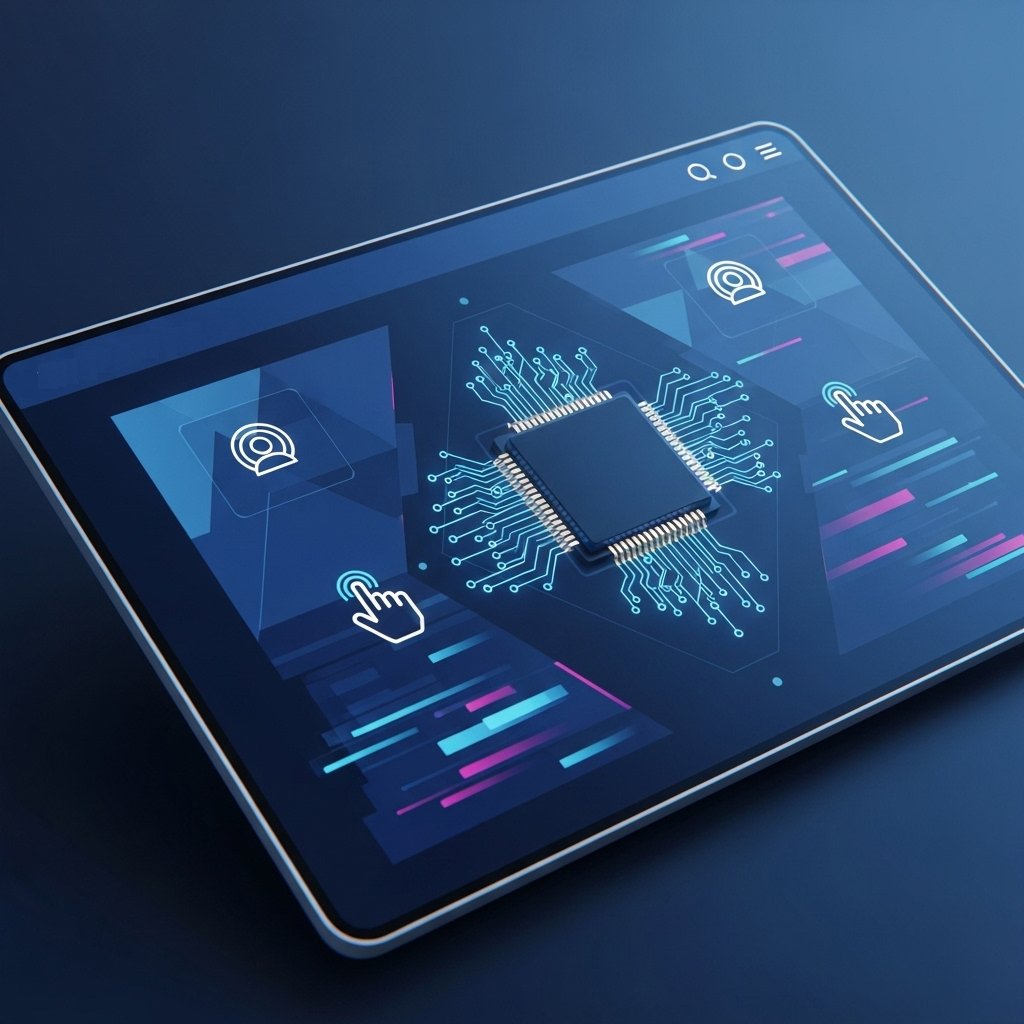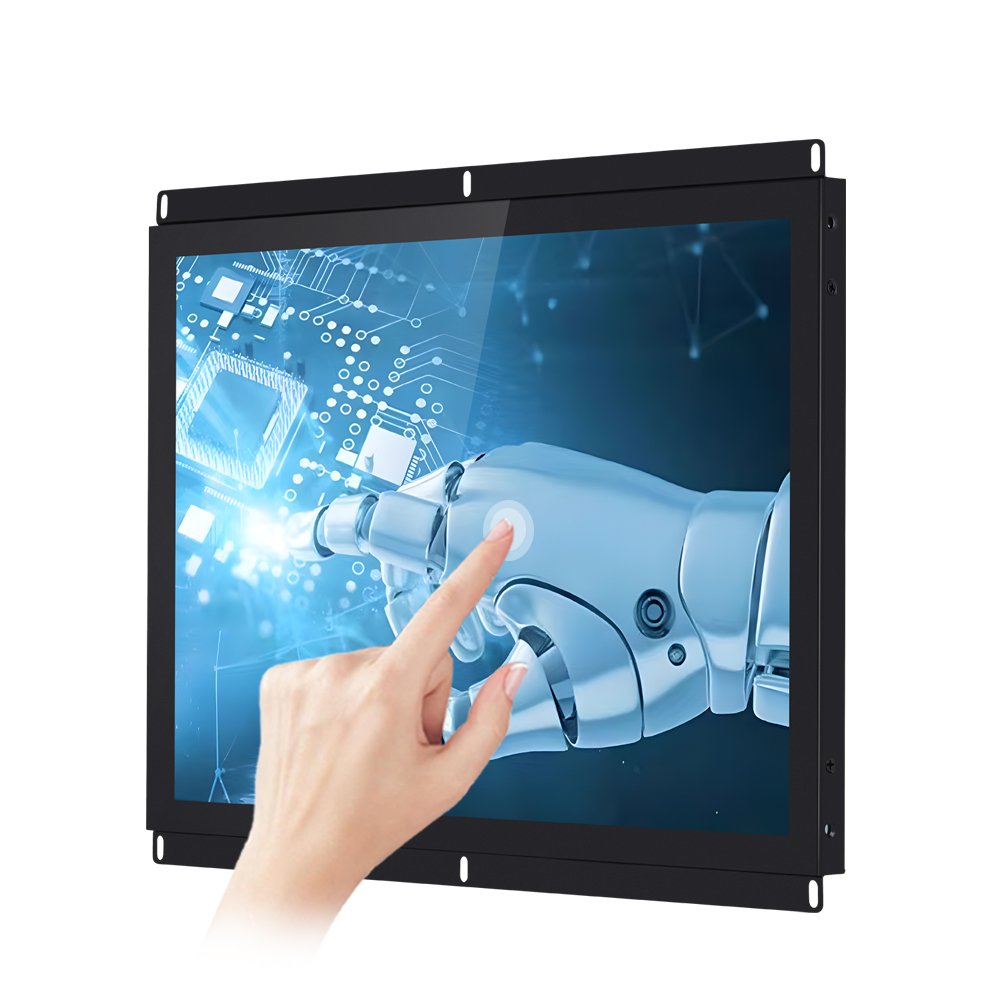How Do Touch Screens Detect Your Touch

A touch screen can feel when you touch it. It does this by noticing changes on its surface. This lets you use your finger to control what you see. The technology puts both input and output in one device. This makes it simple to use phones, tablets, and other digital tools. There are different ways […]
Touchscreen Technology: A Comprehensive Guide to Specifications, Drivers, Connectivity, and Calibration Software

Introduction: Mastering Human-Machine Interaction with Advanced Touchscreen Technology This touchscreen technology guide explores a cornerstone of modern human-machine interaction that is pervasive. You’ll find it in smartphones, tablets, and self-service kiosks. This comprehensive guide delves into touchscreen specifications, driver software, hardware connection methods, and the application of calibration tools. We cover diverse touchscreen types, including […]
Simplified Capacitive Touch Sensing for Advanced Human-Computer Interaction

As advanced electronic devices become more common, the demand for intuitive Human-Computer Interaction (HCI) has skyrocketed. This evolution places simplified capacitive touch sensing technology at the forefront, changing how we interact with the world around us. While resistive touch has its place, simplified capacitive touch sensing has emerged as the superior approach. Its advantages are […]
Choosing Your Next Industrial Panel PC? Here’s How to Get It Right.

Selecting the right Industrial Panel PC can be a complex task, but it doesn’t have to be. A wrong choice can lead to equipment failure, project delays, and budget overruns. To ensure you invest in a device that is reliable, durable, and perfectly suited to your needs, follow this proven four-step process. Here’s your no-mistakes […]
Simplified Capacitive Touch Sensing for Modern Human-Machine Interaction (HMI)

A Simpler Approach to Capacitive Touch for Modern Human-Machine Interfaces (HMI) As smart electronic devices continue to advance, incorporating Simplified Capacitive Touch Sensing in human-machine interfaces (HMI) has consequently become more important in our daily lives. Furthermore, touch-sensing technology, a key part of HMI, is also moving forward quickly. Currently, the two main types of […]
The Safety of Touch Screens: A Comparison of Waterproof, Dustproof, and Drop Resistance

In today’s fast-paced digital world, touch screens have become an integral part of our daily lives. From smartphones to industrial machines, touch screens are everywhere. However, with their widespread use, concerns about their safety and durability have also surfaced. In this blog post, we will explore the safety features of touch screens, focusing on their […]
The Integration of Touch Screens and Artificial Intelligence: Revolutionizing Human-Computer Interaction

In today’s fast-paced digital world, the integration of touch screens and artificial intelligence (AI) is transforming how we interact with technology. From smartphones to industrial applications, this fusion is enhancing user experience, increasing precision, and expanding the potential of touch interfaces. This article explores how AI is improving touch screen technology, its applications, and the […]
Design Principles for Enhancing Touchscreen User Experience: Best Practices for Intuitive Interfaces

In today’s digital age, understanding the design principles for enhancing touchscreen user experience is crucial for creating effective interfaces. As the reliance on touchscreen technology grows, so does the importance of designing interfaces that are not only functional but also intuitive and user-friendly. This article explores key design principles for enhancing touchscreen user experience, ensuring that users […]
Understanding Touch Screen Technology: Capacitive vs. Resistive Touch Screens

In today’s digital world, touch screens have become an essential part of our everyday lives. Whether it’s on smartphones, tablets, or interactive kiosks, touch screens are everywhere. However, not all touch screens are created equal. The two most common types are capacitive and resistive touch screens, each with its own unique working principles and applications. […]
Why ARM-Based Industrial All-in-One PCs Are the Smart Choice for Automation

In today’s fast-paced world of industrial automation, choosing the right computing solution is more important than ever. Among the many options available, the ARM-based Industrial All-in-One PC stands out for its powerful performance, energy efficiency, and adaptability. These devices are designed to meet the tough demands of factory floors, control rooms, and smart manufacturing systems. […]
.png)